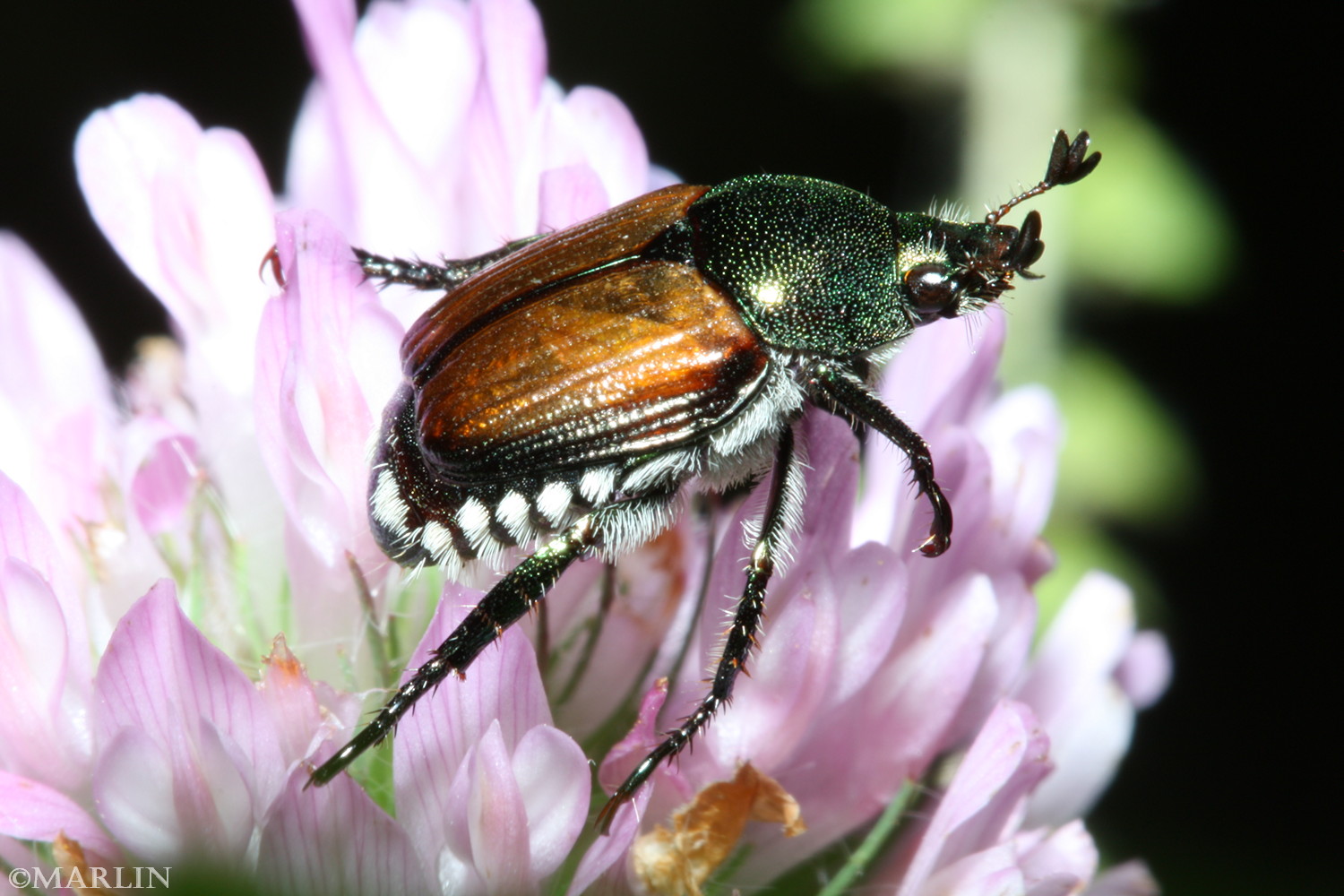Japanese Beetle – Popillia japonica
Family Scarabaeidae – Scarab Beetles / Subfamily Rutelinae
Live Japanese beetles photographed at Illinois, Wisconsin, and Pennsylvania, USA.
The Japanese Beetle is an invasive, oval shaped beetle with a bright metallic green body and pronotum and brown or reddish-orange elytra.
Luckily, they are easy to kill with just soapy water. I put about 2 inches of soapy water in one of those big plastic coffee cans (Folger’s) and go out hunting. Approach them carefully – if they stick their middle legs out that means they have seen you – and slide the bucket underneath the flower or whatever the beetle is sitting on, and with your other hand, come down slowly from above them. The beetle will do one of two things – try to fly away, or immediately fold everything up and drop to the ground.
If you’re ready, swat the flying ones into the can. Make sure it’s sudsy – the second they hit suds, they are a goner.
If you have positioned your bucket properly, the ones that fall will go right into the drink. Et viola! They drown in the soapy water.
I would say about 75% of them try the fall down and disappear trick. That’s easiest of all to foil.
Sometimes I get dozens and dozens at a single sweep of my gardens. Be sure to throw the water out often – it will really stink after a few hours! I have another trick not for the faint of heart: I can flick with my middle finger one of these beetles crunch to death off any flower or stem they like to perch on.
Japanese beetles can feed on about 300 species of plants, ranging from roses to poison ivy. Odor and location in direct sun seem to be very important factors in plant selection. The beetles usually feed in groups, starting at the top of a plant and working downward. While a single beetle doesn’t eat much; group feeding by many causes severe damage. Adults feed on the upper surface of foliage, chewing out tissue between the veins. This gives the leaf a characteristic skeletonized appearance.
A few beetles on plants, or some moderate damage, will bring in more. Japanese beetles apparently produce aggregation pheromones that will attract more males and females to feed and find potential mates. In addition, volatile odors from damaged plants may attract more beetles.
Scarab beetle antennae form a club at the last 3-7 segments, flattened into plates (lamellae) that can be expanded or folded together
*Update 2023
Thank Jah the huge population explosion of Japanese beetles here in northern Illinois is waning fast, after peaking in 2015-2019. They were everywhere and nearly killed a little-leaf linden down the street – the whole thing was skeletonized. I believe some sort of pathogen or predator has culled their numbers back into line with native beetle populations – but that is just conjecture.
Beetles Main | Beetles Index | Longhorns | Leaf Beetles | Soldier | Blister | Lady
Tree Encyclopedia / North American Insects & Spiders is dedicated to providing family-friendly educational
resources for our friends around the world through large images and macro photographs of flora and fauna.


